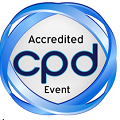Yuanyuan Qiu
University of Alberta, Canada
Title: Assessment of Human Viruses in Municipal Wastewater in Calgary, Canada
Biography
Biography: Yuanyuan Qiu
Abstract
Water shortage is an increasing problem worldwide. Effective treatment of wastewater for reuse has attracted interests for public and scientific community. Currently, most of the studies related to the quality of reclaimed wastewater focus on the bacteriological indicators, such as E.coli and total coliform. There is limited data of human viruses in wastewater. In fact, human enteric viruses are present at high levels in wastewater, which poses a potential risk to public health and hinders application of reuse. The objective of this study is to assess the effect of UV treatment on the virus removal at two municipal wastewater treatment plants in Calgary, Canada. Ten liters of pre- and post-UV treatment wastewater samples were collected in duplicate monthly for 12 months. Viruses were concentrated by filtration, elution, and flocculation followed by nucleic acid extraction. A real-time quantitative PCR viral panel was used for detection and quantification of eight viruses including norovirus (NoV), rotavirus (RV), sapovirus (SaV), astrovirus (AsV), adenovirus (AdV), enterovirus (EV), JC virus (JCV) and reovirus (ReoV). Viral infectivity was assessed using both cell culture and integrated cell culture and qPCR (ICC-qPCR). NoV, RV, AsV and AdV were detected in all 24, EV and JCV in 23, and SaV in 22 of pre-UV samples, respectively. The mean viral load (except ReoV) ranged from 3.06 (JCV) to 5.77 (RV) log10 DNA copies/L in pre-UV samples and 3.23 (JCV) to 5.68 (RV) log10 DNA copies/L in post-UV samples. The average virus removal by UV treatment ranged from -0.42 (JCV) to 0.52 (NoV) log as assessed by qPCR, which may be due to the sample variation and the limitation of qPCR in detection of live viruses. Further studies on developing a qPCR method to differentiate the infectious and non-infectious viruses are of interests. Cell culture and ICC-qPCR detected infectious viruses in all 24 pre-UV, and 19 out of 24 post-UV samples. Approximately 1.8 log reduction of infectious viruses could be achieved by current industrial standard UV treatment. The results indicate a moderate effect of UV treatment on virus inactivation in municipal wastewater, which urges further studies to increase the understanding of the effect of UV treatment on human viruses in wastewater to improve the wastewater reuse and public safety as treated wastewater is discharged into river and could become source water for downstream users.

